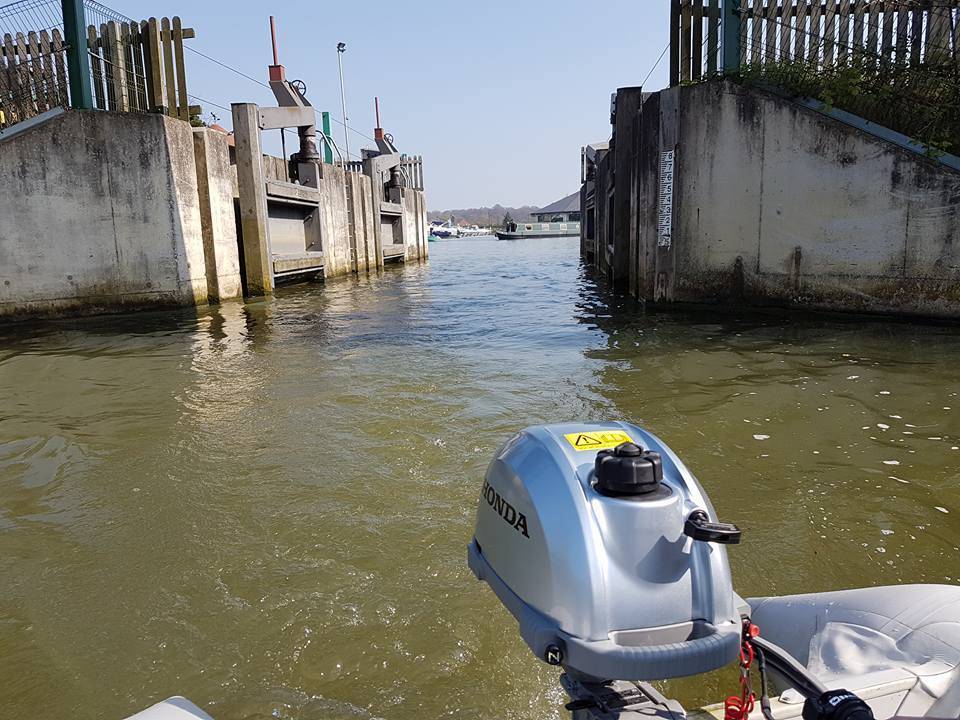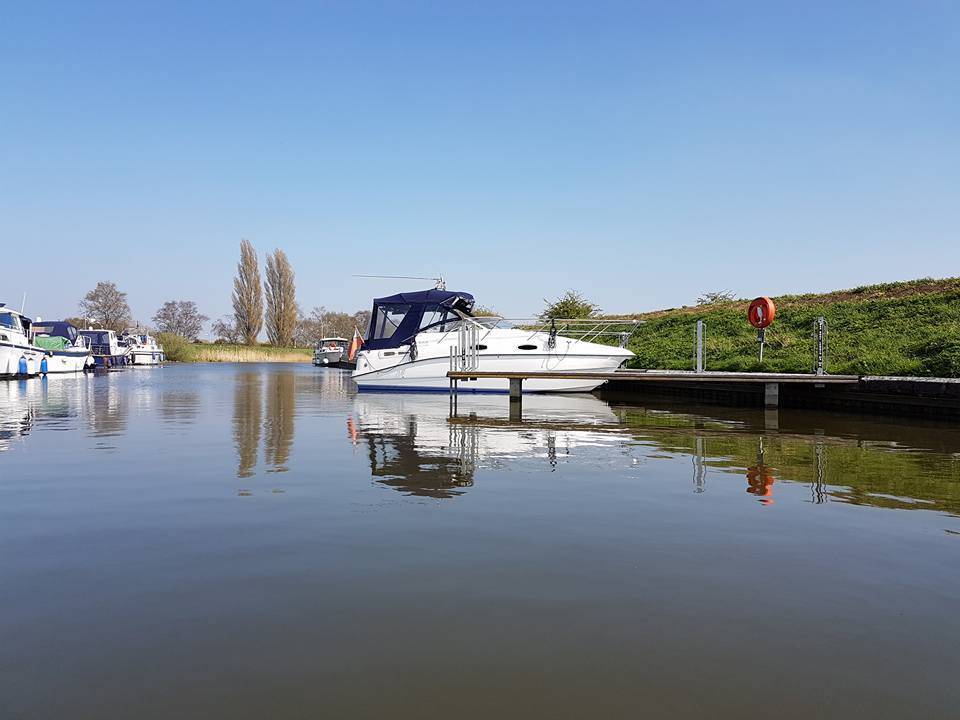-
Posts
10,284 -
Joined
-
Last visited
-
Days Won
16
Content Type
Profiles
Forums
Events
Gallery
Blogs
Store
Posts posted by peterboat
-
-
2 hours ago, Naughty Cal said:
Yep. They are not cheap.
A new one of our van is now knocking on the door of £90k. And that's a mid range van.
High end manufacturers are well over £100k now.
Not a cheap choice anymore. Used vans are holding their prices well because new ones are so expensive.
That's why so many Van's are being converted to campervans. I did ours for that reason, plus a proper Motorhome didn't give us what we wanted, which was kennels under the bed with a storage system at the stern. We didn't want a shower as we use swimming pools for that, and I still needed the ability to fit a 1 ton bag of wood in the van for the stove. Yours is undoubtedly a better vehicle than ours but wouldn't work for us.
-
Used mine tonight excellent item, wouldn't be without it. Mine is an AF100UK and the batteries and inverter handle it fine
-
54 minutes ago, IanD said:
Like planes (or even cars...), boats have the issue that there's a design tradeoff between lateral stability and drag, especially with relatively short light boats like this one -- but also more stability means slower to respond when manoeuvring. As you say, this usually gets better the faster you go, which is of course not an option on the canals... 😉
True, I went flat out down a section that is piled both sides, it goes straight as a die, 1200 rpm which 4mph it wanders 6 mph it diesnt, so bigger rudder it is to sort it out. It has a 1 meter draft with a keel but they dont help at low speeds
-
2 hours ago, IanD said:
You could always fit a Schilling rudder... 😉
I actually thought about that, but in reality it's just the instability in a straight line that's the issue. Its well documented for the boat that they set them up for low drag speed
-
I hope it is worth it, I have also the extend the rudder, its designed for low drag speed not 4 mph canals, going on a straight line can be difficult! However at flat out speeds its straight as a die
-
I have yet go decide on a fridge freezer for the new boat, I am tempted to just move my 12 volts one across, but we will see nearer the time
-
We tried out the boat last weekend, it worked well but was uncomfortable with the fixed seating. Also the bathroom doesn't have a shower and is very dated. So yesterday I removed the bathroom and part of a wall to make it 1300mm square, I will install a shower tray but make the whole floor waterproof. The sea toilet is removed and will be planted over. Some wiring needs sorting in there as it's to thin. I am removing a small porthole and fitting a 12 volts extractor fan. Also some more insulation will be installed as its 1 inch polystyrene currently! The walls will be wall board the plastic stuff, its 2 layers so provides some insulation. The toilet will be a composting one again as mine has been extremely successful in the big boat. She also passed BSS on Wednesday and will be getting pulled out on Thursday next week for hull painting etc and survey. I also bought 3 x 410 watt solar panels from City plumbing 60 squids each, so the windscreen will be removed and they will be fitted on the wheelhouse roof after its painted of course. I have also opened up the water tank to check it out, its actually in good condition. I have ordered paint and will be sorting it out this week. The boat also is due out on Thursday for hull painting and a survey so things are moving on.
I think this brings us up to date? I have a video of us cruising but cant post it which is a shame
-
 3
3
-
-
34 minutes ago, Orwellian said:
So what you posted was just nonsense then.
No for 2 million they wanted the water below it, they had their reasons ie moorings for their boat but also to do work on the straddle itself which CRT have left empty and get in extremely run down condition.
-
5 minutes ago, IanD said:
Did OVO buy it then?
No somebody else bought it, OVO wanted the water under the building, Richard with the Dorothy Pax told me who it was but I was busy at the time, I will ask him next time who his new landlord is
10 minutes ago, Orwellian said:So Ovo offered more for what was not for sale. That you know the unsuccessful bidder is immaterial. Auction is regularly used by charities to ensure they receive proper value
OVO offered when it was up for sale prior to auction, but they wanted the water below the straddle as well, they didn't offer for the arches as they didn't want them
-
3 hours ago, Orwellian said:
Can you provide any evidence to support that comment?
Yes Ovo offered them the 2. Odd million for the straddle to expand into, they wanted the water below it as well. So it went to auction along with the arches and made just over 1 million. I know the owner of OVO and the sale is public record
-
2 hours ago, IanD said:
Then why ask the question?
(or was it a riposte aimed at Peter's deliberate misuse of figures -- in which case, we're on the same side here...)
Sometimes it's difficult to tell the difference between sarcasm and ignorance on the internet, there's plenty of both... 😉
Clearly you haven't read about the sale of the straddle and arches in Victoria quays? They had an offer for the straddle at 2. something million but in the end sold it for half that
-
 1
1
-
-
58 minutes ago, Naughty Cal said:
It has. We drove over the bridge at the weekend on our way home from a lovely weekend in Louth, and the pontoon was still there.
It's a good place to stop in an emergency
-
On 11/04/2024 at 11:45, Alan de Enfield said:
Its always worth reading beyond the headlines - the information is in the public domain.
Yes they had a Property Portfolio income of £55 million, but unfortunately they made a whopping loss on this property portfolio
The property portfolio produced valuation losses of £61.8m (2021/22: gains of £40.2m)
which, combined with £2.8m (2021/22: £5.7m) of realised gains on disposals, produced a
capital reduction of 8.1% for the year.Our non-property portfolio of investments produced revaluation losses before fees
of £3.0m (2021/22: gains of £37.7m).Clearly they are useless at running property as they are at running the canals
-
 2
2
-
-
Does look like the Ouse to be honest. Maybe Selby ?
-
2 hours ago, Momac said:
That's a good price.
For me this was the third BSS on the same boat by this surveyor.
Will you attend during the exam ?
I prefer not to be present and have never attended a BSS exam.
I used to do house surveys and always thought the presence of the owner a distraction.
I will be present I know the examiner as a friend, he is fair but safe which is what the BSS is about. He also can offer good advice which is invaluable
-
26 minutes ago, Momac said:
A brief update
The BSS exam was completed today. No changes relevant to the BSS have bee made to the boat since last time. The (almost) 4 years since the previous BSS test has gone very fast.
The fee is £220 which is a bit more than I had anticipated but nothing unusual in that.
At least it has passed with no expense on modifications or upgrades and with no comments.
Mine is tomorrow at 1230 180 squids in my case
-
On 24/02/2024 at 13:47, mrsmelly said:
I have and still use a proper cast iron frying pan, it's better than so called non stick. It's heavy and has been in constant use since 1945. It was a wedding present for my parents. Mainly used on a proper old stove but last forty years ISH on a gas stove. You simply cannot buy stuff like this in 2024.
My ex wife threw my mums away! It was my granny's before her. She did it as a deliberate get at me, so annoying as things really didn't stick to it
12 hours ago, Bristolfashion said:The use of HVOs (which claim a 90% reduction in CO2) is certainly an interesting development for "greening" the diesel engine.
One of the problems of deciding how green the lifestyle is is comparing like for like. How do we include transport, holidays etc as well as the usual gas,diesel & electricity? Do we, as a couple, compare ourselves to the average UK household, the average UK 2 person household or some theoretical lifestyle that we'd live in a house?
I wonder if, in highly populated areas concerned about pollutants, more compulsory shore power is an answer - we're moored in the centre of a city with pollution issues and a ULEZ zone, it would seem churlish to run a diesel engine or a wood burner as there is shore power available.
HVO is green at all, its mostly made from palm oil grown on land that was once rainforest. So its responsible for humans and animal's being killed or made homeless, its transport is pollution heavy, it has no use unless it can be proven to be made from real waste oils, which doubtful to say the least. McDonald's runs its lorries on real biodiesel from its restaurants so it's real waste oil being used
-
 1
1
-
-
2 hours ago, ditchcrawler said:
Canal boaters “facing homelessness” as fees shoot up 75% | The Lead
And the press say
Just laughing at the NBTA and their fairy tales honestly they are causing the problem yes things are going up far to fast for my liking, however everywhere I look I see overstayers
-
-
14 hours ago, Andyaero said:
What happens re insurance in cases like this? If it was a car it'd be written off and scrapped and you'd get a pay out and sometimes the opportunity to buy it back and fix up yourself. Does this exist with boats?
Seems its not the owner making this video, is he fixing it for them, was it not fully insured? Or has he got it as scrap and fixing it up?
It does, we have had a number of sinking and half were left with the shell to rebuild.
-
10 minutes ago, Naughty Cal said:
We don't know anyone who moors down there who has a good word to say for them!
I am on a Broads forum so I will formulate what we will do. My mate had a boat there and had no issues, he just got to busy so sold the boat and bought one in Rotherham, the drive to Norfolk isn't a good one is it?
-
5 hours ago, Naughty Cal said:
Don't expect much better from the BA!
I honestly don't think they can be worse than CRT can they? We have a couple of years before Jayne retires so can wander around up here, then it's time for somewhere else
-
-
9 hours ago, IanD said:
There's no way that license fees -- direct to CART and indirect via marina fee slicing and commercial licenses -- can pay 100% of the cost of running the canals, and neither should they given the other sources of CART income including property, water extractions and the DEFRA grant, and the use of the canals as a resource by non-boaters.
But it's clear that they are artificially low, and -- even after the recent changes, which will take 5 years to come into effect -- are not graduated enough, the differences between different types of boats and boaters are too small, and there is insufficient enforcement of the rules about moorings, especially overstaying CMers.
Just like the current tax system this has been to the detriment of less well-off boaters with smaller older cheaper boats and to the advantage of better-off boaters with bigger newer more expensive ones, and also has favoured those who bend (or break) the rules to their own advantage (cheap living) while effectively penalising those who follow the rules.
It's also clear that the reduction of the government grant in real terms in recent years and even more so in the future is going to have a severe impact, and doesn't even make sense given their stated view of the canals as a "national treasure" or part of the national infrastructure -- but it's just another example of Tory privatisation-by-stealth, anything to get stuff to disappear off the government books and make it Somebody Else's Problem -- in this case CART, who can do very little about it.
The result of all this has been an ever-increasing maintenance backlog combined with more and more money spent on emergency repairs, more stoppages making it difficult for boaters to actually use the canals for -- well, boating, and a system parts of which are increasingly clogged up with CMers to the point of being well-nigh inaccessible to boaters who actually boat.
The problem is that the two things which would fix these problems -- restoration of the central grant (in real terms) to at least what it was when CART was formed, and a significant and rapid increase in license fees with more graduation (bigger and faster than CART have proposed, with a bigger surcharge for wideboats and CCers to discourage CMers) -- are being blocked, the first by the government and the second by the boaters who would be worse off as a result, including the NBTA... 😞
CRT were handed an extensive portfolio of land and buildings, the revenue was supposed to help with the costs, however I do wonder if the money is getting reinvested rather than being spent on the system










Tonic required. Send in your photos of what is nice on the waterways now.
in General Boating
Posted
Know soot on well, finally sailed away last year I think after being used as children's university accommodation